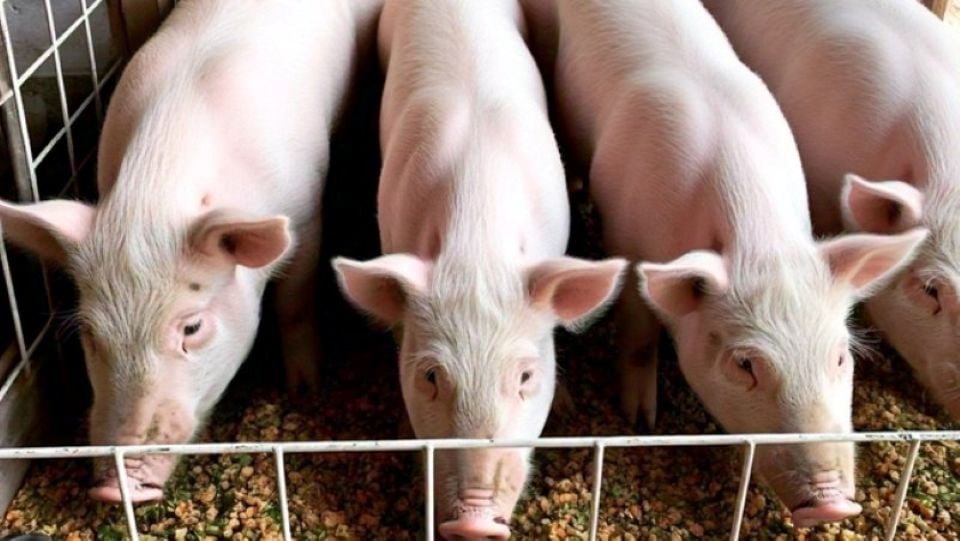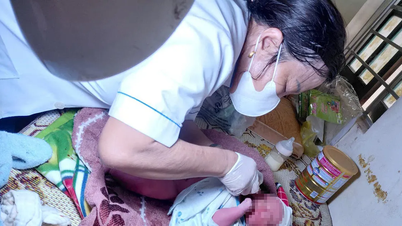
In the North, pig prices have shown signs of recovery, although the increase is still modest and not uniform across localities. Some places have adjusted the price up by VND1,000/kg, but most places still maintain the old price.
Bac Giang province has now increased to 68,000 VND/kg, while Lao Cai has inched up to 67,000 VND/kg.
However, localities such as Phu Tho, Vinh Phuc, Hung Yen , Thai Binh, Nam Dinh and Nghe An still maintain the level of 65,000 - 67,000 VND/kg, showing that the recovery momentum is not really clear.
The Central Highlands region continues to witness a clear differentiation in live pig prices, with slight increases and decreases during the day. Prices increased by VND1,000/kg in Quang Binh and Thua Thien Hue, reaching VND69,000/kg.
On the contrary, the price decreased by 1,000 VND/kg in Binh Phuoc (to 70,000 VND/kg), Lam Dong and Binh Thuan (down to 71,000 VND/kg).
Many localities such as Quang Nam, Quang Ngai, Binh Dinh still keep the price fluctuating around 67,000 - 68,000 VND/kg, while Dak Lak and Khanh Hoa maintain the level of 68,000 - 70,000 VND/kg.
In the South, the sharp decline continued to be maintained strongly, with many places decreasing by up to 2,000 VND/kg. Currently, the price level in this region fluctuates between 70,000 - 75,000 VND/kg, many provinces recorded record low prices.
Prices decreased by VND1,000/kg in Binh Duong and Long An, to VND69,000 - 70,000/kg; while in Tien Giang, Tra Vinh, Soc Trang and Bac Lieu, prices decreased to VND71,000 - 72,000/kg.
Some localities such as Vinh Long have sharply reduced by 2,000 VND/kg, to 70,000 VND/kg; Ca Mau also reduced to 73,000 VND/kg.
Provinces such as Can Tho, Hau Giang, and An Giang currently maintain prices in the range of 72,000 - 73,000 VND/kg, but compared to the beginning of the week, many places have witnessed a total decrease of 3,000 - 4,000 VND/kg.
Market pressure has made pig farmers increasingly worried as pig prices continue to fall. Records at farms in the Mekong Delta region show that this price drop is putting farmers under a lot of pressure, especially in the context of feed prices remaining high. Many households have had to sell early to cut losses due to concerns that prices may continue to fall in the coming time.
According to experts, the negative trend may continue if fresh meat consumption does not improve during the upcoming Hung Kings Commemoration Day holiday.
Mr. Tran Lam Sinh, Deputy Director of Dong Nai Department of Agriculture and Environment said: "The livestock industry accounts for the highest proportion in the agricultural production value of Dong Nai province, accounting for 61.83%", according to Vietnam Agriculture Newspaper.
As of now, the total pig herd in Dong Nai is about 1.9 million, down 5.23% compared to the same period last year. Local pig farming activities are facing many challenges related to disease prevention, herd declaration, entry and exit inspection and farm relocation.
According to Mr. Sinh, in the past year, the locality has had many outbreaks of livestock diseases. Regarding the pig herd alone, 1,300 pigs were destroyed. In addition, the relocation of livestock farms out of residential areas has been 80% completed, while 20% is still facing difficulties in implementation.
Regarding the livestock sector, representatives of the Department of Agriculture and Environment of Dong Nai province proposed three issues that need attention.
Specifically, the first content is traceability. Mr. Tran Lam Sinh emphasized: “This is an extremely important factor, which has a decisive meaning in ensuring food safety. If we do not build and operate according to the chain, it will be impossible to effectively implement traceability”. In the immediate future, he said that it is necessary to regulate and implement identification codes for livestock farms.
Next, it is necessary to add specific regulations on total herd declaration to legal documents, and at the same time apply an additional form of online declaration. This is not only encouraging but also mandatory to enhance the effectiveness of disease control and surveillance.
Finally, it is imperative to build and implement a unified management software. For the system to operate effectively, there needs to be a central unit that acts as a “conductor” to coordinate the entire process, unifying data and information nationwide.
Source: https://doanhnghiepvn.vn/kinh-te/gia-heo-hoi-ngay-5-4-2025-mien-nam-tiep-tuc-lao-doc-mien-bac-khoi-sac-nhe/20250405094455355


![[Photo] National conference to disseminate and implement Resolution No. 66-NQ/TW and Resolution No. 68-NQ/TW of the Politburo](https://vphoto.vietnam.vn/thumb/1200x675/vietnam/resource/IMAGE/2025/5/18/adf666b9303a4213998b395b05234b6a)

![[Photo] General Secretary To Lam visits exhibition of achievements in private economic development](https://vphoto.vietnam.vn/thumb/1200x675/vietnam/resource/IMAGE/2025/5/18/1809dc545f214a86911fe2d2d0fde2e8)


![[Photo] More than 17,000 candidates participate in the 2025 SPT Competency Assessment Test of Hanoi National University of Education](https://vphoto.vietnam.vn/thumb/1200x675/vietnam/resource/IMAGE/2025/5/17/e538d9a1636c407cbb211b314e6303fd)



















![[Photo] Prime Minister Pham Minh Chinh chairs meeting on science and technology development](https://vphoto.vietnam.vn/thumb/1200x675/vietnam/resource/IMAGE/2025/5/17/ae80dd74c384439789b12013c738a045)
































































Comment (0)